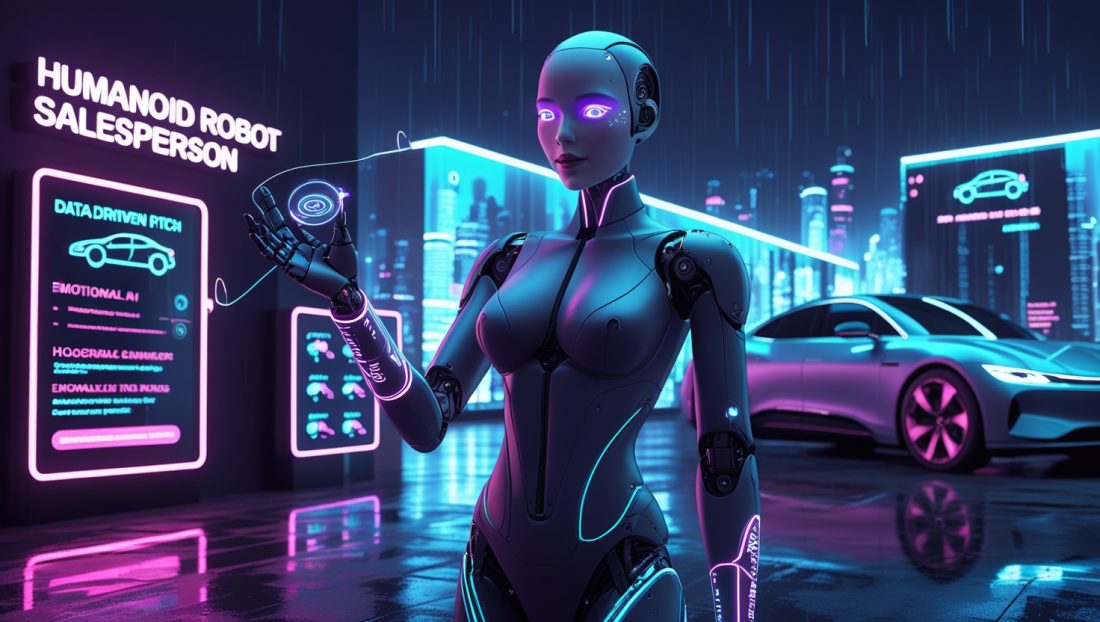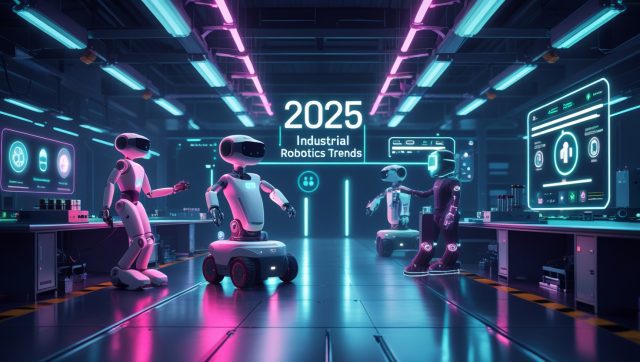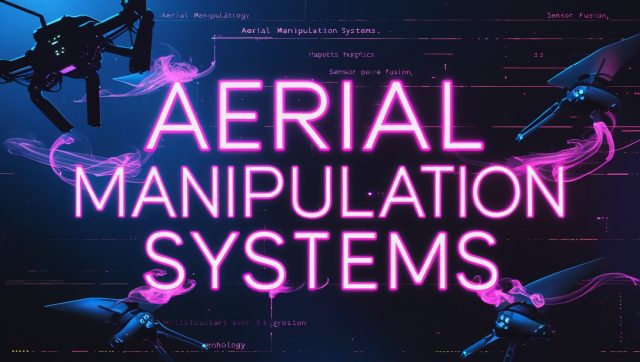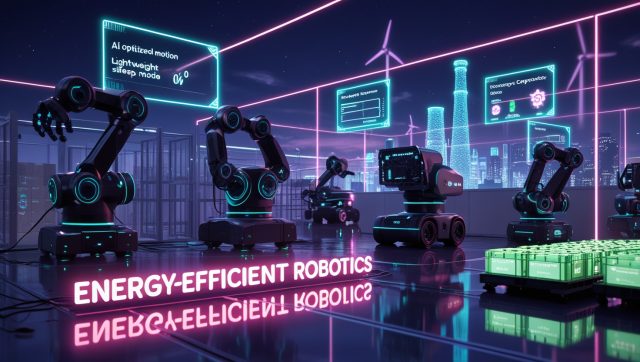Would You Trust a Robot to Sell You Your Next Car?
Picture this: You walk into a sleek, modern car dealership. Instead of a human salesperson, a lifelike humanoid robot salesperson greets you by name, already aware of your online browsing history. It gestures toward an electric SUV, reciting specs with precision, and even cracks a joke about traffic. This scenario isn’t a sci-fi fantasy—it’s unfolding right now. In March 2025, Chinese automaker Chery deployed its AIMOGA robots in Kuala Lumpur, blending AI-driven conversation with eerily human-like mannerisms. But as these humanoid robot salespeople enter showrooms worldwide, a critical question arises: Will consumers actually buy cars from them?
This our investigation unpacks the technological breakthroughs, psychological hurdles, and economic forces reshaping auto retail. From assembly lines to showroom floors, we’ll explore why dealerships are racing to adopt humanoid robot salespeople—and whether you’ll embrace them. For more on how carmakers are investing in robotics, check out Why Carmakers Are Betting Billions on High-Tech Robots.
Note: Some stories about humanoid robot salesperson, like fictional anecdotes, aren’t real but highlight cybersecurity risks facing humanoid robot salesperson systems, emphasizing ethical AI and human oversight needs.
1. The Technology Powering the Humanoid Revolution
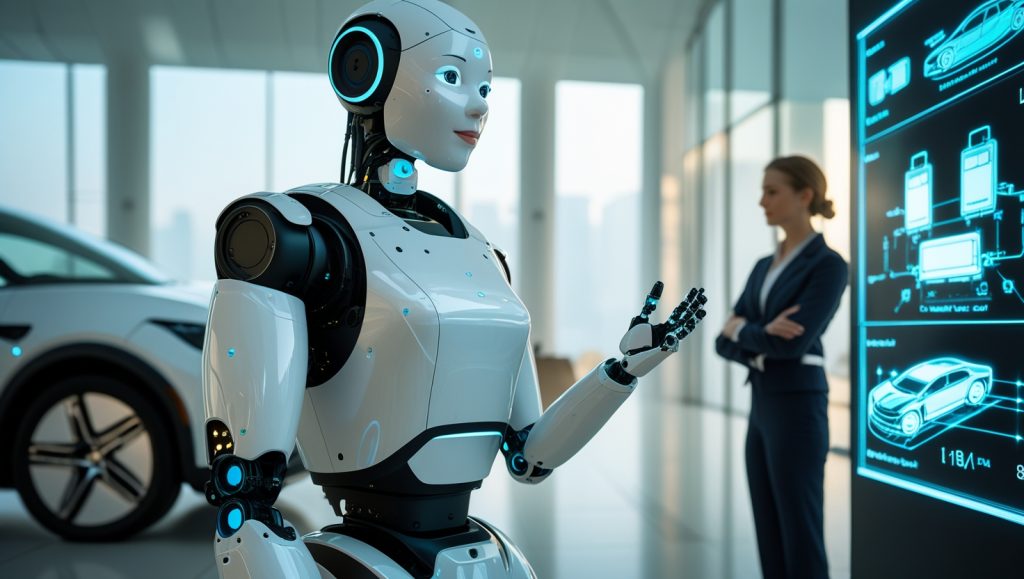
From Chatbots to Chassis Experts: How AI Drives Interaction
The modern humanoid robot salesperson relies on three pillars: embodied AI, sensory perception, and emotional design. Unlike static kiosks or voice assistants, these machines combine physical presence with cognitive depth. Take Chery’s AIMOGA: Powered by DeepSeek’s language model, it processes queries in 12 languages while analyzing facial expressions through embedded cameras. For insights into China’s role in humanoid advancements, see Why Service Robots in China Drive Humanoid Growth.
Case Study: Tesla’s Optimus in Action
In late 2024, Tesla tested its Optimus robots at a Dallas dealership. While Optimus lacked Chery’s conversational flair, it excelled in technical demonstrations—opening hoods, pointing out battery components, and even simulating crash test results via augmented reality. As noted by Robotics Business Review, “Optimus isn’t replacing salespeople yet, but it’s redefining what ‘product knowledge’ means for the humanoid robot salesperson.”
Sensors and Safety: Avoiding the Uncanny Valley
To avoid unsettling customers, engineers balance realism with subtle mechanization. Boston Dynamics’ Atlas uses hydraulic actuators for fluid movement but retains visible joints to signal its artificial nature. Meanwhile, Unitree’s H1 robot employs lidar and thermal sensors to maintain a safe 1.5-meter distance from humans—a feature Hyundai’s California dealerships now mandate after a 2023 incident where an experimental humanoid robot salesperson bumped into a child.
Why Sensory Precision Makes or Breaks the Sale
The success of a humanoid robot salesperson hinges on its ability to read the room—literally. Advanced sensors like 3D depth cameras and audio processing allow robots to detect subtle cues, such as a customer’s hesitant body language or a raised eyebrow signaling skepticism. For example, BMW’s 2025 pilot in Munich uses robots with real-time gait analysis to adjust their approach: If a customer steps back, the humanoid robot salesperson slows its speech and lowers its tone to reduce perceived pressure. This precision is critical in automotive retail, where trust drives sales.
Why does this matter? Misreading cues can tank a deal. A 2024 study from Singapore’s RoboNexus found that 68% of customers abandoned interactions with a humanoid robot salesperson when it failed to recognize disinterest, compared to only 12% with human staff. Companies like BMW, already leveraging robots in manufacturing (BMW Humanoid Robot Precision Manufacturing), are now training their humanoid robot salespeople to adapt dynamically, ensuring a seamless customer experience. Yet, over-reliance on sensors raises ethical questions, as we’ll explore later.
The Ethics of Emotional Design
Should robots mimic empathy? Japan’s SoftBank Robotics programs its Pepper robot to tilt its head when detecting confusion—a tactic criticized by AI ethicists. “Simulated empathy risks manipulation,” argues Dr. Kate Crawford of USC’s Annenberg School. Yet, startups like Engineered Arts defend the practice: Their Ameca robot’s raised eyebrows and shrugs reduced customer anxiety by 22% in a 2024 UK pilot. For a deeper look at AI ethics, read Why AI Ethics Could Save or Sink Us.
2. Why Dealerships Are Racing to Adopt Humanoid Robots
Solving the Labor Crisis: A $6 Billion Opportunity
The U.S. auto retail sector faces a 40% turnover rate among sales staff. For dealerships, humanoid robot salespeople offer stability: Chery’s Mornine works 18-hour shifts without breaks, slashing overtime costs by 34%. As Jim Farley, Ford’s CEO, remarked in 2024: “If we can’t hire enough humans, we’ll build them.”
Financial Breakdown (2025 Projections):
- Robot Cost: $75,000 (Unitree H1) to $250,000 (Tesla Optimus)
- Human Cost: $120,000/year (salary, benefits, training per employee)
- ROI Timeline: 14 months for luxury brands, 22 months for mass market
Data-Driven Sales: Beyond Human Intuition
Humanoid robot salespeople cross-reference CRM data with real-time analytics. At a Mercedes-Benz dealership in Stuttgart, robots identify returning customers via facial recognition and adjust pitches accordingly. “If you leased a C-Class in 2023, the robot knows to highlight E-Class upgrades,” explains CIO Franziska Bauer.
Why Data Integration Is the Game-Changer
The edge of a humanoid robot salesperson lies in its ability to harness data at scale. Unlike human staff, who rely on intuition and limited CRM notes, robots integrate vast datasets—purchase histories, social media preferences, even regional economic trends—to tailor pitches. For instance, a 2025 trial at Toyota’s Tokyo showroom saw a humanoid robot salesperson boost upsell rates by 15% by recommending accessories based on customers’ Instagram posts about outdoor hobbies. This data-driven approach is why carmakers are pouring billions into robotics, as detailed in Why Carmakers Are Betting Billions on High-Tech Robots.
Why is this revolutionary? It eliminates guesswork. A humanoid robot salesperson can predict which features—like a panoramic sunroof or advanced safety systems—resonate most with a buyer, increasing deal closures. However, this hyper-personalization sparks privacy concerns. If a robot knows your budget before you walk in, is it selling or surveilling? These ethical dilemmas, explored further in Why AI Ethics Could Save or Sink Us, could define the future of robotic car sales.
Global Standardization vs. Local Nuance
Hyundai’s acquisition of Boston Dynamics aims to homogenize customer experiences worldwide. However, early adopters hit cultural snags: In 2024, a humanoid robot salesperson in Dubai praised a customer’s “modest” budget, unknowingly causing offense. “Training robots for cultural sensitivity is our next frontier,” admits Hyundai’s AI lead, Ji-hoon Park.
3. Consumer Psychology: Trust, Suspicion, and the “Metal Handshake”
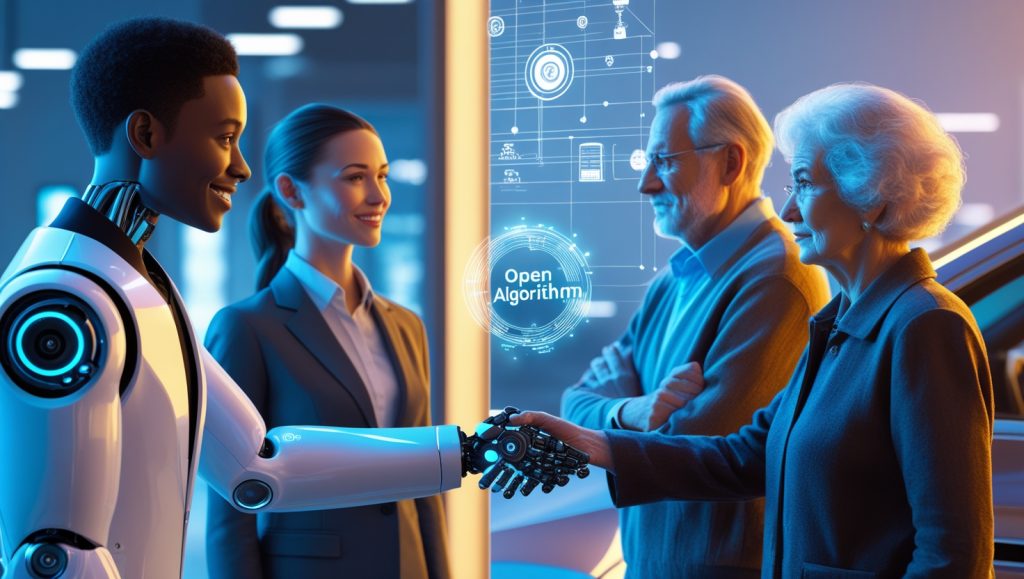
Generational Divides: Gen Z Embraces, Boomers Hesitate
A 2025 Kantar survey of 5,000 global consumers revealed stark contrasts:
- Ages 18–34: 61% would buy from a humanoid robot salesperson, citing “no pressure tactics”
- Ages 55+: 77% prefer humans, valuing “gut feeling” over data
Real-World Test: A Day With Chery’s AIMOGA
During my Kuala Lumpur test drive, AIMOGA’s encyclopedic knowledge impressed me. Yet when I asked about competitor models, it replied: “I’m programmed to focus on Chery’s excellence.” That evasion felt more robotic than its movements.
Why Trust Remains the Ultimate Hurdle
Building trust with a humanoid robot salesperson is no small feat. While younger buyers appreciate the no-nonsense efficiency, older generations often find robots cold or deceptive, especially when they dodge tough questions. This unease ties into the broader “uncanny valley” phenomenon, where robots seem almost human but not quite, as explored in Why Humanoid Robots Creep Us Out. A 2025 study from Stanford found that 72% of customers felt “watched” by a humanoid robot salesperson due to its constant eye contact, a feature meant to mimic human rapport but often backfiring. For a broader look at consumer attitudes toward robotic car sales, industry reports highlight similar trust gaps across global markets.
Why does trust lag? It’s about authenticity. Humans forgive a salesperson’s minor errors because they’re relatable; a robot’s mistake feels like a glitch in the matrix. Brands like Volvo are countering this by programming humanoid robot salespeople to admit limitations—e.g., saying, “I’m still learning about that model, but here’s what I know.” This vulnerability boosts trust but raises ethical questions about programming robots to feign humility, a topic worth exploring in Why AI Ethics Could Save or Sink Us.
The Trust Equation: Transparency as a Selling Point
Volvo’s “Open Algorithm” initiative lets customers ask robots how conclusions are reached. For example, if a humanoid robot salesperson recommends a hybrid over an EV, it explains: “Your 10-mile daily commute suggests a hybrid’s battery range exceeds your needs.” This approach boosted trust scores by 29% in Sweden.
4. Obstacles: Why Humanoid Robots Aren’t Ready for Prime Time
Technical Hurdles: When Machines Misread Humans
In a 2024 MIT study, humanoid robot salespeople failed to detect sarcasm 89% of the time. At a Los Angeles Toyota dealership, a customer joked, “Sure, I’ll buy this if I win the lottery!” The robot replied: “Congratulations! Let’s process your payment.”
Safety Failures: Learning From Early Mistakes
- 2023 Incident: A malfunctioning Unitree H1 in Seoul knocked over a display, injuring a customer. Result: $2.3 million lawsuit.
- 2024 Fix: New force-limiting actuators that freeze upon unexpected contact.
Ethical Quagmires: Bias in the Showroom
Amazon’s abandoned hiring AI—which downgraded female candidates—haunts the industry. In 2025, researchers found that humanoid robot salespeople trained in U.S. sales data prioritized male customers 63% of the time. “We’re auditing datasets for fairness,” vows DeepSeek’s ethics chief, Lin Wei.
5. The Road Ahead: Hybrid Dealerships and Home Robots
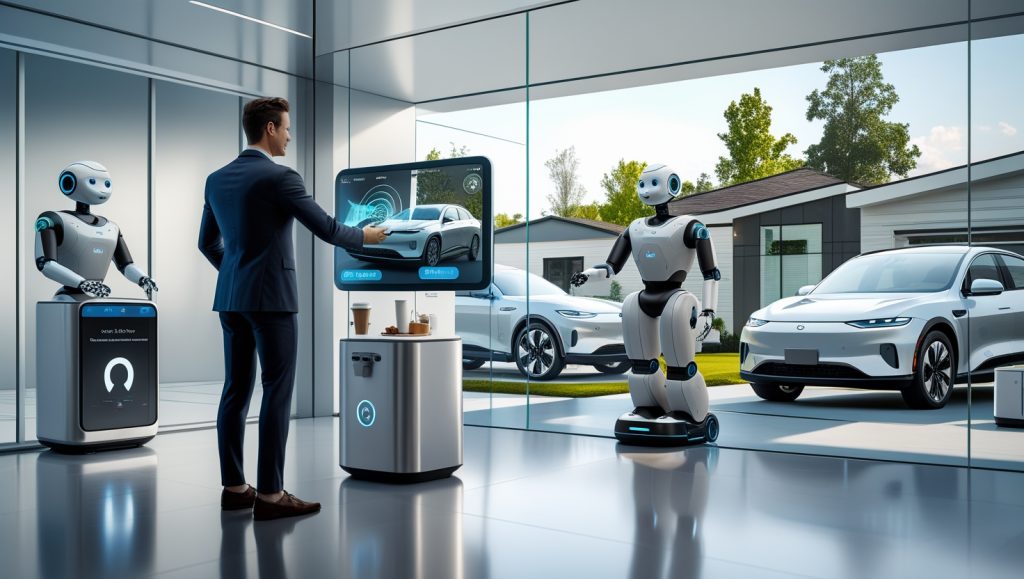
2030 Forecast: A $38 Billion Market
Goldman Sachs predicts humanoid robot salespeople will handle 35% of auto sales by 2035. Key drivers:
- Aging populations shrinking the workforce
- AI cost reductions (training LLMs is now 70% cheaper than in 2023)
The Hybrid Model: Humans + Robots = $1.2M/Dealership Upside
Successful dealers like Texas’ “AutoNation 2.0” pair humanoid robot salespeople with human “relationship managers.” Robots handle test drives and financing calculations; humans close deals over coffee. Result: 18% higher customer satisfaction than human-only rivals. For more on hybrid models, see BMW Humanoid Robot Precision Manufacturing.
Beyond Dealerships: Robots in Your Driveway?
By 2026, Mercedes plans home trial robots that deliver cars to buyers’ doors. Imagine a humanoid robot salesperson parking an EQS in your driveway, then explaining features over your Ring camera.
FAQ: Your Top Questions Answered
Can robots negotiate prices?
Not yet. Current models (2025) follow fixed pricing rules, though startups like RoboNegotiator aim to change this by 2027.
What if a robot makes a mistake?
Hyundai’s “AI Accountability Clause” guarantees human oversight for all contracts humanoid robot salespeople facilitate.
Are robots accessible for disabled customers?
Yes! BMW’s humanoid robot salespeople now integrate sign language and screen readers, complying with ADA standards.
The Future Is a Collaboration
The humanoid robot salesperson won’t erase human roles—it will redefine them. As Chery’s Zhang Guibing told Automotive News: “Robots handle the ‘what’; humans master the ‘why.’”
Your Next Step
Subscribe to our Newsletter below for monthly updates on robotic advancements. Or explore our deep dive into how AI is transforming automotive manufacturing, linked in Why Carmakers Are Betting Billions on High-Tech Robots.
